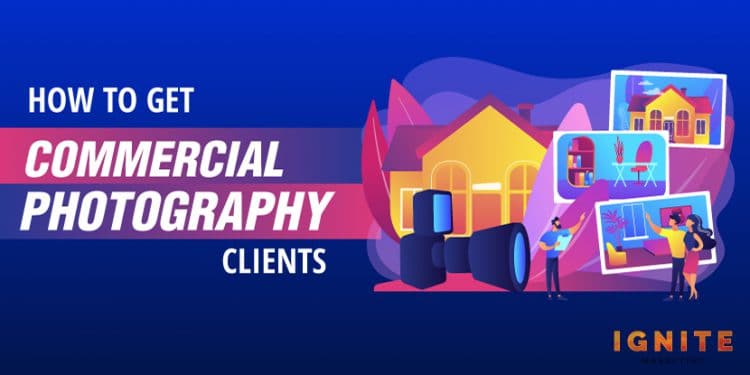


In today’s post, we’re going to talk about how to get more clients for your commercial photography business.
If you’ve been working in this space for any length of time, you’ve probably noticed that it’s a bit tougher to get commercial photography clients than it is to get personal photography clients.
That’s okay, though. The main draw of commercial photography is that the clients you get are much more valuable than clients in the personal photography space.
And if you use the following methods to bring in more clients, your business will be overflowing with both new customers and new revenue in no time.
It’s tempting to label yourself as a generic commercial photographer. You can take great photos of anything, so why limit yourself?
Surprisingly, choosing a specific photography niche will help you find clients.
Here’s why:
Imagine you’re a restaurant owner who wants to take some incredible photos of his most popular menu items.
You do a Google search for commercial photographers in the area, and you come up with two options:
Unless the generic photographer has some fantastic selling points (incredibly low price, astounding portfolio of food photos, etc.), you’re almost certainly going to choose the food photographer.
Why?
It’s simple: the food photographer has better branding.

Even if the two photographers are equally good at taking pictures of food, the fact that one has branded themselves as a food photographer makes them seem like the smarter choice.
So, unless you live in a desolate area where commercial photography work of any kind is hard to come by, I recommend you choose a niche and stick with it.
If you aren’t sure which photography niche you should pick, here are some of the most common commercial options:
Each photo you take might be of interest to a surprisingly large amount of people.
Let’s use real estate photography as an example. If you take a beautiful photo of the side of a house, there are quite a few businesses or people that might want to buy that photo for promotional purposes.
I think you get my point.
If you’re taking a photo of a finished product ‒ whether it be a house, a meal, a shirt, or some other product ‒ there are plenty of businesses that could benefit from showing how their product or service can help create a beautiful result.
By identifying every company that might want to buy a photo, you can expand your potential client base exponentially without putting in much additional work.
Identifying the different businesses that contributed to your photo isn’t the only way to expand your monetization strategy.
Here’s another example that pertains to stock image photographers.
There are many stock image websites out there. Getty Images, Shutterstock, and Adobe Stock are just three of the many options available.
If you take and sell stock images for a living, don’t stick to one of these platforms.
Place your images on as many stock photo websites as possible.

Each site has a separate user base that might be interested in your pictures. By placing your images on each of these sites, you expand your monetization potential and stand to make more money without taking more photos.
Once you choose a niche, you should make an effort to connect with every person in that industry.
We’ll use the real estate photography example again to show how building relationships with everyone can be useful.
Let’s say a real estate development company is building a new apartment complex.
They hire you to take photos of every stage in the process: the excavation of the land, the laying of the foundation, the creation of the structure, the completed and furnished complex, etc.
There are hundreds of people you can form relationships with throughout this process.
If you build a rapport with many of the people who helped build the structure, you could find your schedule overflowing with clients in the future. This is because the people who work in a particular industry tend to stay in that industry as their careers progress.
The laborer you exchanged numbers with might start his own construction business down the road. The furniture mover you talked to might become the manager of the furniture store in a couple of years.
And when they need a real estate photographer to take some pictures, who are they going to call?
If you put in the effort to build a relationship with them, they’re going to call you.
Do you see my point? By making an effort to build relationships with everyone ‒ not just the people currently in charge ‒ you can future-proof your career in commercial photography by building a rich network of industry friends.
Of all the art forms out there, photography is the most visual.
As a result, potential clients will expect every element of your business to be pleasing to the eye.
This includes your website.
It isn’t fair, I know. Web design and photography are completely different things, and people shouldn’t judge your photography skills by how your site looks.

Nevertheless, it’s more important for a photographer to have a strikingly beautiful website than it is for an HVAC contractor, for example.
My number one tip for commercial photographers looking to make a beautiful website is to use the WordPress website framework.
Not only does WordPress make it extremely easy to customize your site, there are hundreds of thousands of professional themes and plugins that let you decide exactly how you want your site to look.
The best part? You don’t need any coding experience.
With WordPress, there’s no need to spend thousands on a custom-coded website. Many of the WordPress themes look and work better than custom options, and you can get them for a fraction of the price.
If you don’t have a website ‒ or you’d like to switch your current site over to WordPress ‒ this comprehensive guide from WPBeginner can guide you through every step of the process.
There are a ton of free themes available to WordPress users. However, I recommend biting the bullet and paying for a premium option.
There are a few reasons I suggest this.
First of all, premium themes tend to look better — the designers who make premium themes put more effort into them because these themes will make them money.
Premium themes also tend to come with support from the developers.
If you have a question or need to change something minor on the theme, the developers will be quick to help you out. This is something you won’t get with a free theme, so people who are unfamiliar with WordPress will find the support that comes with a premium theme exceptionally useful.
Here are a few of the most popular premium commercial photography themes available today:
If these themes don't meet your website design expectations, head over to ThemeForest to find one that piques your interest.
The color scheme you choose will play a significant role in how potential clients view your site.
As a photographer, you’re probably well-acquainted with the basics of color selection.
But if you’d like to read up on color scheme selection in the context of web design, you’ll find this article from Website Builder Expert to be helpful: How to Choose a Good Color Scheme for Your Website.
Creating a sleek, attractive website is essential.
However, having the most beautiful website in the world won’t matter if nobody sees it.
As your number one source of website traffic will be from search engines like Google and Bing, you must do everything you can to get a high rank in the organic search results.
The process of optimizing your site for a high search engine ranking is called Search Engine Optimization, or SEO for short.
If you’ve dabbled in online marketing for any length of time, you’ve almost certainly heard about SEO.

But how does it work? What can you do to improve your SEO and bring more traffic to your site?
Well, there are dozens of things you can do. There are far too many to mention in this article, though.
To keep things simple, I’m only going to mention the essential SEO tips.
If you want a more comprehensive overview of how to improve your SEO, I recommend reading Backlinko’s Complete SEO Checklist.
As a local business offering a particular service, your homepage title and landing page headlines should contain three essential elements:
By placing your name, niche, and location in your site title and your headline, you’ll be optimizing your site for the most crucial search queries:
There are plenty of other search terms it would be nice to rank for. However, you must appear near the top of the search results for phrases containing your business name, photography niche, and location.
A backlink is a link on another site that links to your website.
When I linked to that SEO checklist a little bit ago, I provided Backlinko with a backlink.
As it turns out, backlinks are super important in SEO.
A recent Backlinko study found that the number of websites linking to a page had a more significant impact on overall search ranking than any other factor.
It’s not just about the number of links you get, though. It’s more about the quality of the links than anything else.
A single link from an authoritative website like BBC News or Scientific American is worth more than a thousand links from random, no-name blogs.
In fact, if you ask a thousand no-name blogs to stuff their content with links to your site, it could hurt your SEO more than help it. This is because search engines like Google are aware of these so-called “Black Hat” SEO tactics that attempt to game the search algorithm into giving you an artificially high ranking.
If you want your website to rank well in the search results, you need to get some backlinks from authoritative and relevant sites. There are a few ways you can do this:
Whether you’re making blog content or informational pages, adding relevant keywords to the URLs of those pages can help them rank higher in the search results.
I also have another URL-specific SEO tip I want to add to this section: keep it short.
Shorter, more concise URLs tend to perform better than longer ones.
Your URL structure is something you’ll have decided on when you first made your website.
So, if any of your pages have longer URLs, there’s not much you can do now.
Going forward, you should keep URLs on the shorter side.
If you’re not currently using Google Analytics to track how people interact with your site, I recommend you start now.

While using Google Analytics won’t directly affect your SEO, it will give you some critical insights into how people are interacting with each page:
If you notice a lot of people are spending a lot of time on a particular piece of content, you can apply what you did there to other pages on your site. And likewise, you can find pages that are underperforming and change them to work better.
Google views the mobile version of your website as the “true” version of your site. Therefore, how well your site works on mobile will have SEO implications on all devices, not just smartphones.
For a full list of ways to optimize your website for mobile viewing, I recommend reading this Mobile Optimization Guide from Moz.
Social media is an essential part of any client acquisition strategy.
And as photography is such a visual industry, it’ll be easier for you to build a following than it will be for businesses in more boring industries.
Anyway, there are three social media platforms you’ll want to prioritize: LinkedIn, Instagram, and Facebook.
Here are some resources to help you build up a client base on each of these platforms:
